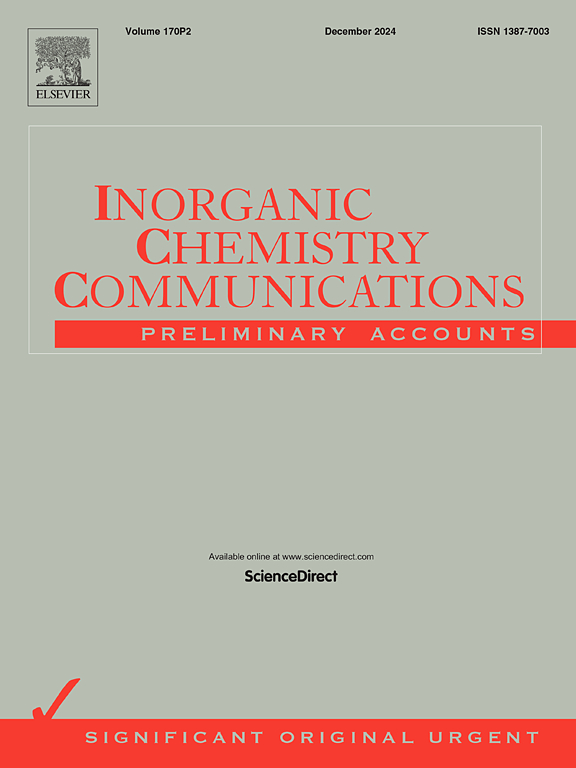Exploring catalytic applications of graphene-transition metal oxide nanocomposites for next-generation catalysis: A review
IF 4.4
3区 化学
Q1 CHEMISTRY, INORGANIC & NUCLEAR
引用次数: 0
Abstract
The exceptional features of graphene, excellent electron mobility, and high surface area establish it as one of the most studied catalysts in different reactions and chemical processes. Hybrids of graphene have been developed with similar morphological materials to investigate other exciting properties and explore the enhanced catalytic behavior of graphene. Among such materials, layered transition metal oxides (TMOs) have been researched to be the most appropriate material, assisting graphene in boosting its catalytic capabilities. The judiciously insertion of these TMOs into graphene to produce hybrids can be done using numerous preparation methods. Appropriate synthesis prevents the stacking of graphene and enables the formation of 3D porous networks, thus improving functionality and performance. These hybrid materials are viable substitutes that diminish the disadvantages of employing just TMO nanoparticles in various catalytic applications, including photocatalysts, carbocatalysts, electrocatalysts, etc., thus achieving sustainable development. This review focuses on the current development of graphene-TMO nanocomposites, with a detailed account of their synthesis and their properties as catalysts. This review highlights the advantages of graphene as a support material for transition metal oxides, such as improved catalysis, conductivity, and stability. Furthermore, we explore various synthesis methods for these graphene-based metal oxide nanocomposites, which offer control over the size, morphology, and distribution of the metal oxide nanoparticles on the graphene surface.

石墨烯-过渡金属氧化物纳米复合材料在新一代催化中的应用综述
石墨烯的优异特性、出色的电子迁移率和高表面积使其成为不同反应和化学过程中研究最多的催化剂之一。人们开发了石墨烯与类似形态材料的混合材料,以研究石墨烯的其他令人兴奋的特性,并探索石墨烯的增强催化行为。在这些材料中,层状过渡金属氧化物(TMOs)已被研究为最合适的材料,可帮助石墨烯提高催化能力。通过多种制备方法,可以将这些 TMOs 巧妙地插入石墨烯,从而产生混合材料。适当的合成可以防止石墨烯堆叠,并形成三维多孔网络,从而提高功能和性能。这些混合材料是可行的替代品,可减少光催化剂、碳催化剂、电催化剂等各种催化应用中仅使用 TMO 纳米粒子的缺点,从而实现可持续发展。本综述重点介绍了石墨烯-TMO 纳米复合材料的发展现状,并详细介绍了其合成及其作为催化剂的特性。本综述强调了石墨烯作为过渡金属氧化物支撑材料的优势,如改善催化性、导电性和稳定性。此外,我们还探讨了这些基于石墨烯的金属氧化物纳米复合材料的各种合成方法,这些方法可以控制金属氧化物纳米颗粒在石墨烯表面的尺寸、形态和分布。
本文章由计算机程序翻译,如有差异,请以英文原文为准。
求助全文
约1分钟内获得全文
求助全文
来源期刊

Inorganic Chemistry Communications
化学-无机化学与核化学
CiteScore
5.50
自引率
7.90%
发文量
1013
审稿时长
53 days
期刊介绍:
Launched in January 1998, Inorganic Chemistry Communications is an international journal dedicated to the rapid publication of short communications in the major areas of inorganic, organometallic and supramolecular chemistry. Topics include synthetic and reaction chemistry, kinetics and mechanisms of reactions, bioinorganic chemistry, photochemistry and the use of metal and organometallic compounds in stoichiometric and catalytic synthesis or organic compounds.
 求助内容:
求助内容: 应助结果提醒方式:
应助结果提醒方式:


